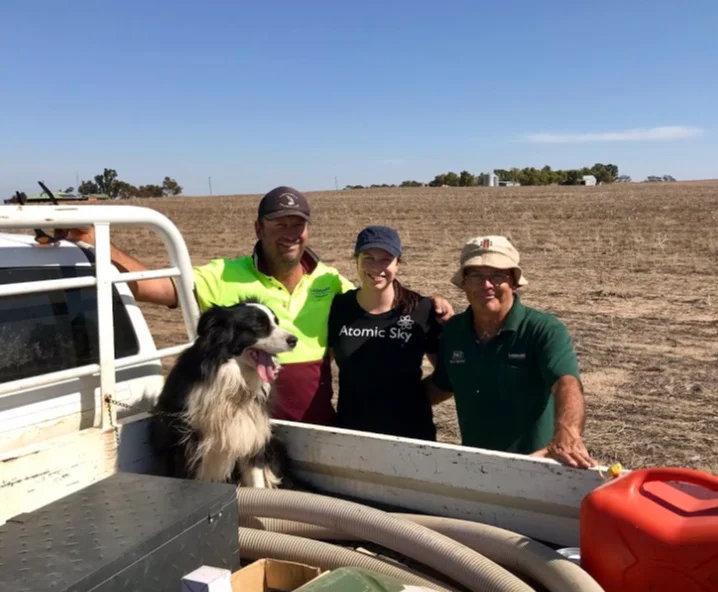There is undeniably a lot of buzz around agtech now, which could be seen by the great turnout at the Southern Dirt Techspo in Wagin and Katanning last week. Some of this hype has been fuelled by the mining downturn, food security issues, data availability and connectivity improvements, and a need to create value-add opportunities and supply chain efficiencies to remain globally competitive.
“And of course, some of the agtech toys out there are just damn cool. The question is – where are the real opportunities for agtech in WA, and where is it just hype?”
Let’s first think about some of the numbers for perspective. AgFunder predicts the global agtech market to be worth more than $US4.2 billion. Australia’s agtech investment is still relatively small (about $3 million), but expected to grow as early stage companies begin to scale and adoption increases. KPMG predicts that the Australian agricultural industry could grow from $63 to $100 billion by 2030 – to achieve this growth in production and supply chain efficiencies technology will undoubtedly play a major role.
Technology will shape the future of agriculture in Western Australia and incredible opportunities do exist where data is linked to business decisions. Farmers have always been incredible innovators and ready adoptors of new technology once the value is demonstrated.
So what are the emerging technologies and how to make sense of their practical application on farm? Yes there is a deluge of drones, a barrage of blockchain, rampant robots…you get the picture. Many farmers and their advisors are understandably feeling overwhelmed by it all and want to see beyond the hype to what is actually helping on farm.
Practical examples that can be demonstrated right now include robots for weed control, virtual fences for cattle, sensors for soil moisture, drones to estimate nutrient levels, tags for livestock and many more that you will often see showcased in the Countryman.
“The capability of the technology already exists, yet there is still a significant gap between what the tech can do, and what farmers actually need it to do.”
I got pulled up by my brother, a farmer from Cunderdin, last year for getting sucked into the hype. Being a scientist, I love all the data being collected, with all types of plant health measures mapped across whole farms. After sending another one of these pretty pictures to my brother, he was quick to ask how can it actually help him manage his farm better? Here lies the gap between precision and decision agriculture. How can we utilise this data in real time to improve decision making? For example, surely having real time data on plant nutrient levels to automatically apply variable fertiliser rates will be just around the corner.

Clearly there is a need to understand how the tech fits in with the farming enterprise, and understand how farmers make decisions. Tech start-ups need to demonstrate the value proposition to farmers – in simple terms how will the tech improve their gross margin, save them time, reduce hazards or improve sustainability. Customer validation is obviously business 101, but it continues to surprise me how many businesses don’t seek early feedback on new ideas.
Once the value proposition is established, we need to also ensure new technology is trialled with farmer input into the design. We need to make sure that agtech is not pushed out into the market when its not quite ready, as farmers have long memories when products fail to deliver (yes I’m thinking about you Dad).
Facilitating collaboration, research and tech trials between innovators and farmers is key to capitalising on potential opportunities. We have seen incredible potential within the HARVEST Accelerator program, where start-ups have finally been able to trial their ideas with farmers, some of them for the first time in their product development cycle. Gaining trust, acting on feedback and doing small trials together without a big capital outlay is a great start.
The broader industry needs to support adoption with trials of the tech in action. We have seen DPIRD and the grower groups taking a great leadership role in this space and hopefully will continue to see more practical demos of the tech on farm. Funding these trials can be challenging, and there is also the potential for farmers to become investors in the start-ups to diversify their off farm investments, but also having a vested interest in the development of the technology.
So my number one advice on how to move beyond the agtech hype? More conversations in the tractor/heddar/ute. Farmers love showing anyone around their farm and love having company during the long hours of seeding and harvest. Start-ups: get out of the city and get your boots dirty.
Dr Natasha Teakle, Managing Director, Innovation Cluster
This article was first published in the Countryman newspaper, August 15 2019
